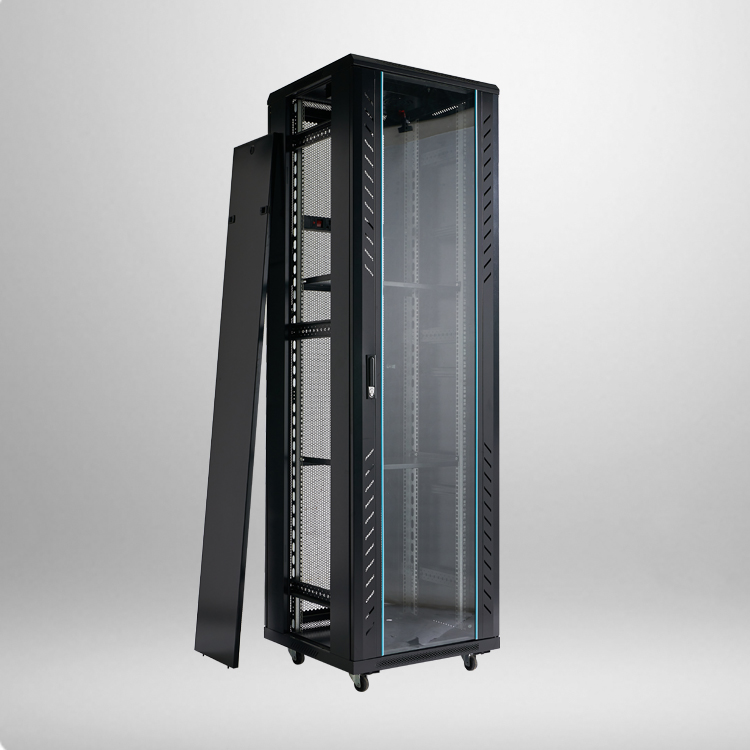
19inch Floor Standing Network Rack 42u is important equipment for installing network equipment, and their reliability and stability directly affect the stable operation of the entire network system. The reliability and stability of 19inch Floor Standing Network Rack 42u should be analyzed and evaluated from the following aspects.
Firstly, the material and structure of the Standing Cabinets are one of the key factors in evaluating reliability and stability. Cabinets are usually made of metal materials, such as cold-rolled steel plates, aluminum alloys, etc. Materials and structural designs with high strength and stability can be selected. When evaluating its reliability, consideration can be given to the strength and quality of materials, the rationality of the structure, such as the connection method of crossbeams and longitudinal beams, and the design of support feet. Stability can be evaluated through the overall structural design of the cabinet, such as whether it has stability devices such as support rods and anchor screws.
Secondly, the manufacturing process and rigor of the Standing Cabinets are also important aspects for evaluating reliability and stability. The process and quality management during the manufacturing process directly affect the reliability and stability of the cabinet. When evaluating manufacturing processes and rigor, it is possible to examine the manufacturer’s production line, equipment, and technical level, as well as whether they have a complete production process and quality management system. You can also learn about the manufacturer’s quality control measures, such as whether there are strict testing processes and laboratory equipment to ensure product quality.
Thirdly, the adaptability and flexibility of the cabinet are also important aspects for evaluating reliability and stability. The cabinet should have the ability to adapt to the installation of equipment of different sizes and forms, and provide suitable interfaces and expansion space to meet the interface requirements and subsequent expansion needs of the equipment. When evaluating adaptability and flexibility, the internal structural design and component installation method of the cabinet can be examined, such as whether there are adjustable trays, panels, horizontal rails, etc., to facilitate equipment installation and maintenance.
Fourthly, the heat dissipation and protection performance of the cabinet are also important factors in evaluating reliability and stability. Network equipment generates a certain amount of heat during operation, and the cabinet should have a good heat dissipation design to ensure stable operation of the equipment under normal usage conditions. When evaluating heat dissipation and protection performance, the heat dissipation design of the cabinet and the ventilation system of the air duct can be considered, such as fans, heat sinks, air conditioning, etc. In addition, the cabinet should also have reasonable dust and moisture resistance to protect the equipment from the influence of the external environment.
Finally, the reliability and stability of the cabinet also need to consider its ease of use and maintenance during use. The cabinet should have the characteristics of convenient equipment installation and maintenance to reduce failure rate and improve the service life of the cabinet. When evaluating usability and maintainability, factors such as cabinet openness, component installation methods, cable control facilities, door lock design, and mobility can be considered.


